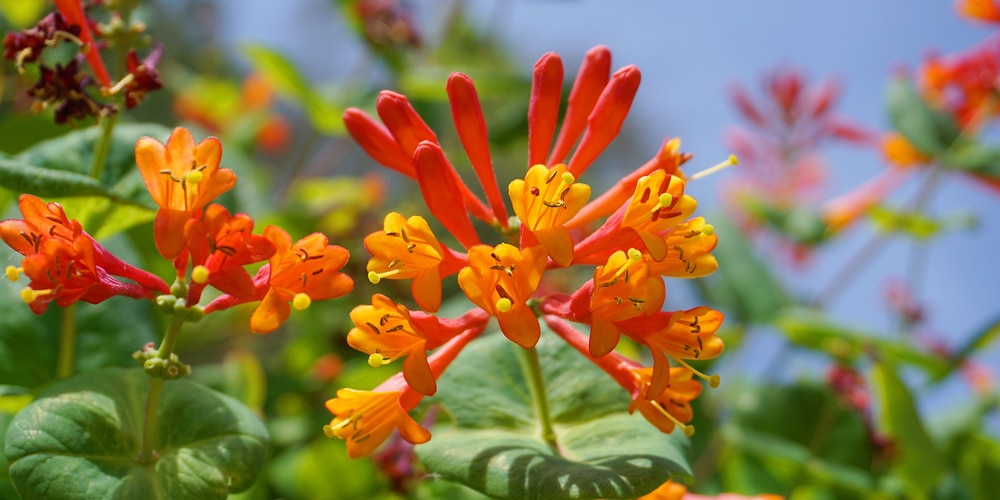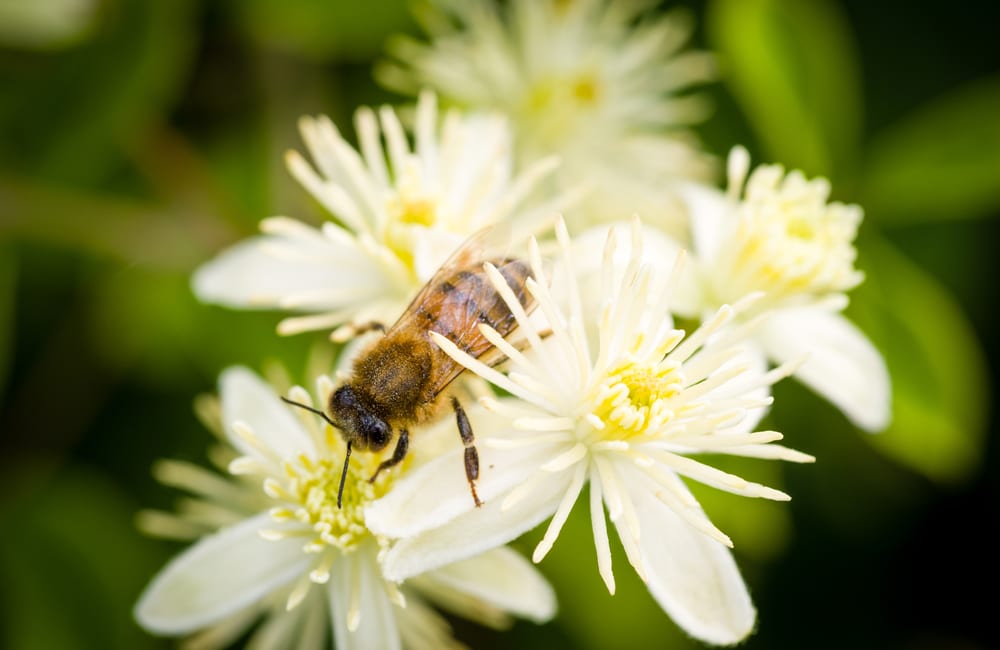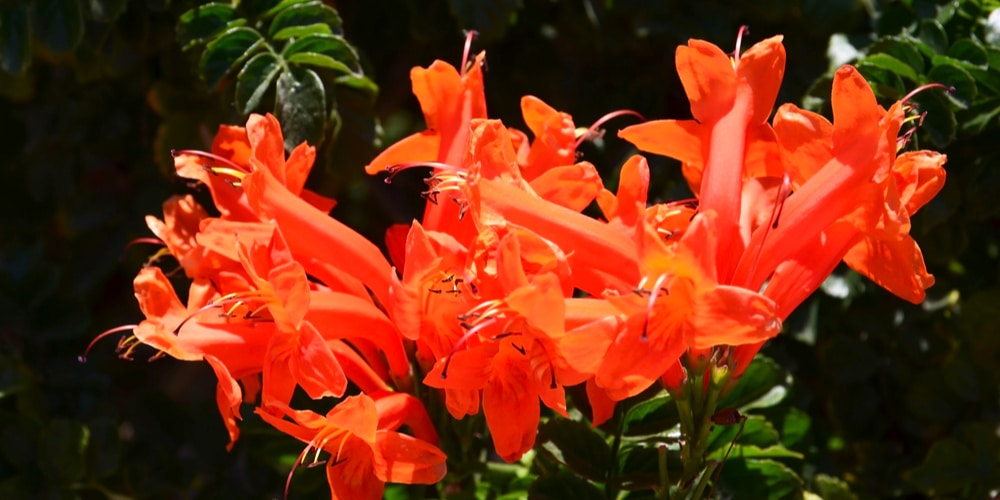The honeysuckle plant is best known for its tubular flowers that are abundant sources of sweet nectar. This is why hummingbirds love them so much. Not only that, but honeysuckles also bear flowers that are fragrant and colorful. Honeysuckles are traditionally used as ornamental plants because of their exceptional beauty.
But honeysuckle plants are only beautiful when they are native to your region. When you spot “bad” honeysuckles growing in your yard, they have to be removed. But how to remove honeysuckles?
Getting rid of invasive honeysuckles is a tedious process, especially if they have already grown too much. You also have to be careful in removing them because invasive honeysuckles are like plant diseases that, when treated improperly, can spread even further in just a matter of time.
Here’s everything you need to know about aggressive honeysuckles and how to get rid of them easily and properly.
Which honeysuckles are invasive?

Most of the honeysuckles that you can see in the United States are either orange honeysuckles or trumpet honeysuckles. These varieties are native, which means they are supposed to be here and they do not cause any harm to the wildlife.
Invasive honeysuckles have hollow stems. They spread with the help of birds feeding on their fruits. Their leaves are arranged oppositely along their stems. They bloom from May to June and have small, very fragrant tubular flowers. If you want an easy way to know whether honeysuckle is native or not, break one stem and see if it’s hollow or solid. Native honeysuckles have a solid stem, while invasive honeysuckles have hollow stems.
In the United States, there are four common invasive honeysuckles: Amur honeysuckle, Tatarian honeysuckle, Morrow’s honeysuckle, and Japanese honeysuckle.
Amur honeysuckle is also known as Lonicera maackii and is native to Japan, China, and Korea. Amur honeysuckle is a deciduous shrub that can grow up to 20 feet high. The flowers are white to pinkish, and the fruits are red to orange-red berries.
Lonicera tatarica is another name for Tatarian honeysuckle. This honeysuckle is also a shrub that can grow up to 10 feet. Locinera morrowii, or Morrow’s honeysuckle, came to Massachusetts in the 1860s. This shrub can grow up to 7 ft. tall and bears white flowers.
Lastly, the Japanese honeysuckle, or Lonicera japonica, is a perennial woody vine that can grow up to 30 feet in length. This honeysuckle is native to China, Japan, and Korea. Japanese honeysuckle produces berries that are dark-purple or black in the fall.
Why do you have to remove invasive honeysuckles?
Invasive honeysuckles are also called “bad” honeysuckles or “aggressive” honeysuckles for a reason. Invasive plants are nonnative plants that cause harm to wildlife.
Honeysuckles are prolific growers and are easy to grow. They are heat-tolerant and can also grow in poor soils. When honeysuckles completely take over a space in your yard or garden, they become a threat to native plants. Here are some reasons why you have to get rid of invasive honeysuckles.
- Can choke trees and bring down weak trees
- Outcompete native plant species for soil nutrients and sunlight
- Compete with native plants for pollinators, suppressing the growth of native plant species
- Are not a source of high-fat, nutrient-rich fruit for migrating birds
How to remove honeysuckles?
Now that you know which honeysuckles have to be removed and why they should be removed in the first place, you’re now ready to get into the field and start getting rid of these harmful plants.
The best time to remove honeysuckles is during the fall or winter when invasive honeysuckles are dormant. This is also the time when they bear fruits that are red or orange in color. This way, you can easily identify them and get rid of the correct variety.
Remember that honeysuckles spread out through their seeds eaten by birds. So, before those seeds appear, start removing the plant. Here are different ways to eradicate invasive honeysuckles.
1. Hand Pulling
Young honeysuckle plants are easier to get rid of than fully-grown honeysuckles. When the invasive honeysuckle is just young and the invasion has just started, hand pulling is recommended to remove them from your garden.
The best way to control invasive honeysuckles is to detect them early before they begin producing seeds. A honeysuckle plant with a stem diameter of 1/2 inch or less is easy to pull out of the ground when the soil is moist.
Also, honeysuckles have shallow roots, so pulling them is an easy task. Make sure that you pull out all the roots because the remaining roots can still grow when summer comes. Or you can just go back in the summer to remove newly emerged invasive honeysuckle plants.
2. Herbicide
Invasive honeysuckles are tough plants. They just don’t die easily, especially when there is a heavy infestation and the plant has already grown too much. This makes them difficult to control and get rid of.
If you’ve got no time for hand pulling, you can use herbicide to kill them. Use herbicide as a foliar spray to easily kill young honeysuckle plants. Dilute the herbicide with water and then spray it on the leaves of the young honeysuckle.
You can also use the herbicide for basal bark applications, where you mix the herbicide with diesel and then spray it at the full circumference of the stem base.
3. Cutting
For honeysuckle plants that have already grown too much and have developed thick stems, you can use the method of cutting to kill them. To cut the stems or vines, you can use a lopper, hand saw, or chainsaw if appropriate.
Be careful when cutting the stems because you are using a sharp blade here. Begin by cutting out the branches of the bigger honeysuckle plant and then proceed to cut the base stem close to the root or ground.
Trimmed stems can regrow, so make sure to treat them with herbicide to stop them from resprouting again. If you don’t want to use herbicide, you can come back again in spring and cut down the newly emerged stem. Repeatedly cutting away the top growth can eventually kill the honeysuckle.
4. Burning
For severe cases of honeysuckle invasion where the plants have already born fruits, burning can help treat invasive honeysuckle seedlings. You can burn the infested area in the spring or fall.
The honeysuckles that have to be burned should be far away from native plants or residences because burning can have adverse effects on native plants and the smoke can cause health problems for human beings. There are also local ordinances and state fire codes that have to be followed before you can use this method.
5. Mowing
If you notice that a lot of seedlings or young invasive honeysuckle plants have already taken over your whole garden, the fastest way to get rid of them is by mowing. This method works best with shrubs.
After mowing, you can then just treat the remaining honeysuckle with herbicide. Mowing can also help get rid of tall shrubs and stop them from bearing any fruit in the fall. This can also help get rid of branches or leaves that block the sunlight.
How To Remove Honeysuckle: Takeaways
Invasive honeysuckle plants shouldn’t be in your garden. They will compete for soil nutrients and suppress the growth of your other plants. You can get rid of invasive honeysuckles by cutting, hand pulling, using herbicide, mowing, and burning. The roots and the seeds are two ways honeysuckle can grow, so pay attention to these two parts.
Visit your garden again in the summer to treat newly emerged plants. The best way to control invasive honeysuckle plants is to treat them as early as possible, and you can only do that if you take a moment to inspect your garden and look for invasive honeysuckles.
Related Article: Can Goats Eat Honeysuckle?


